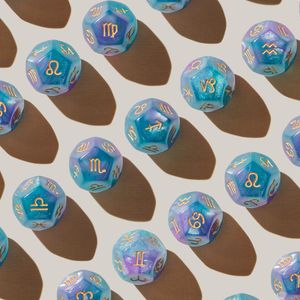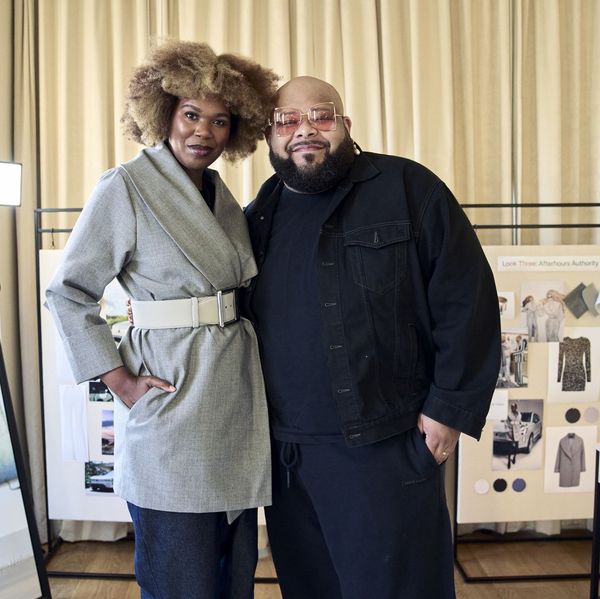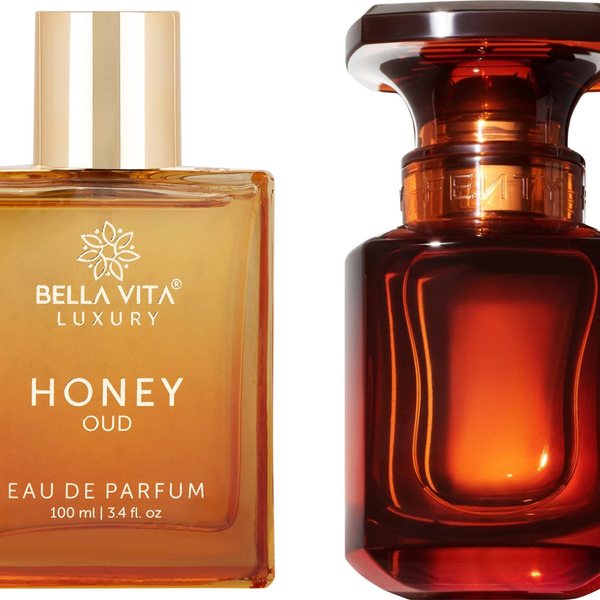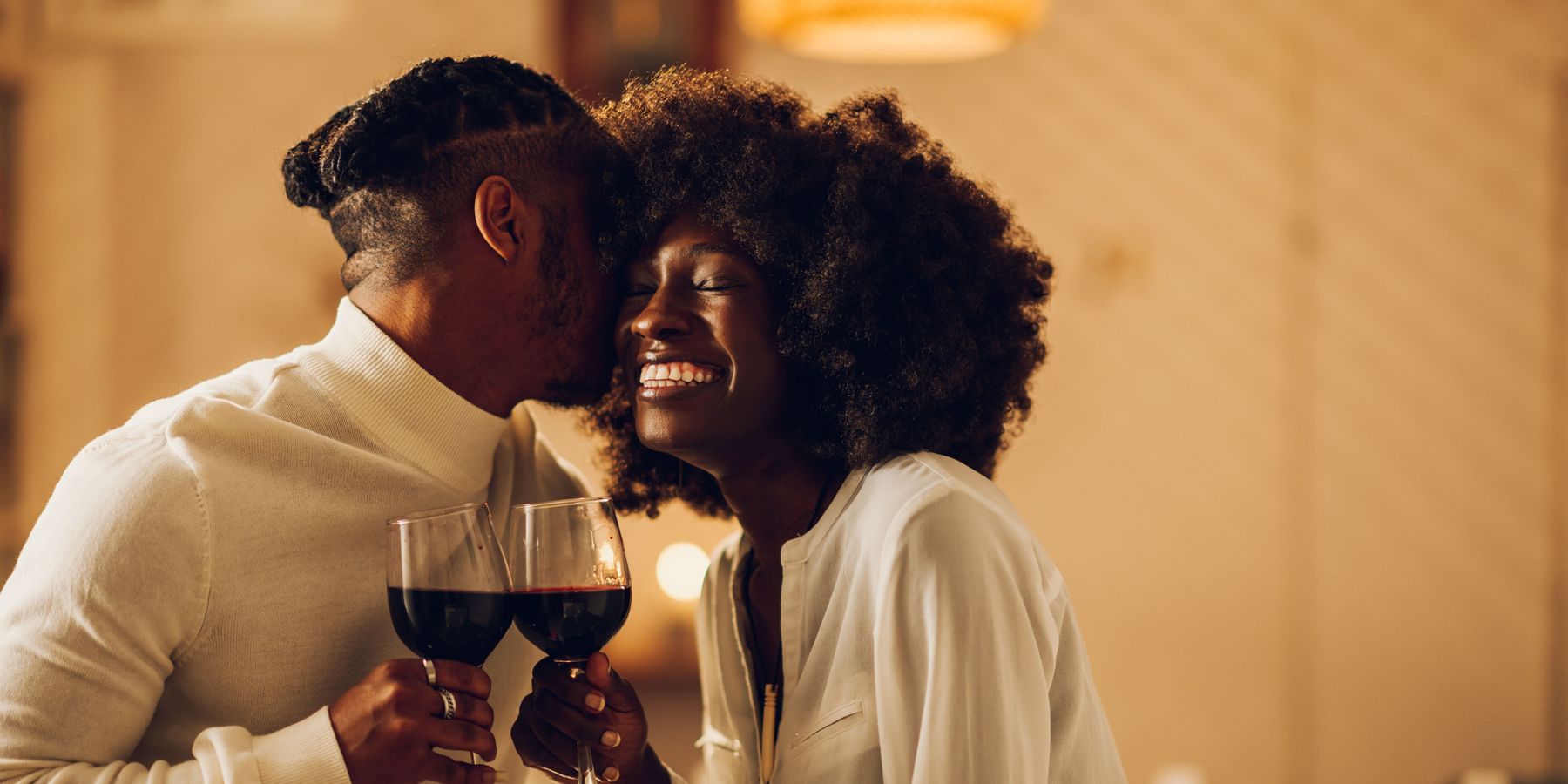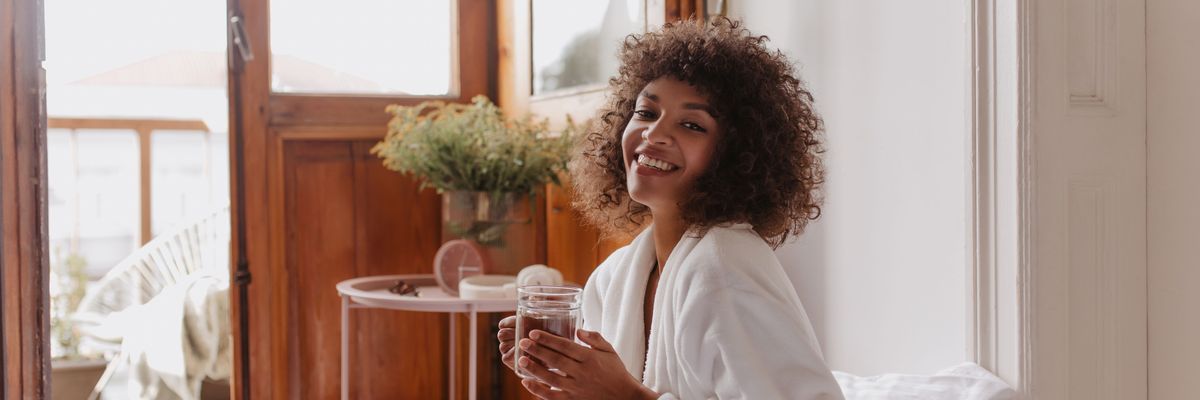Wanna Know How To Survive The Awkward 'Growing Out Phase?' Here Ya Go.
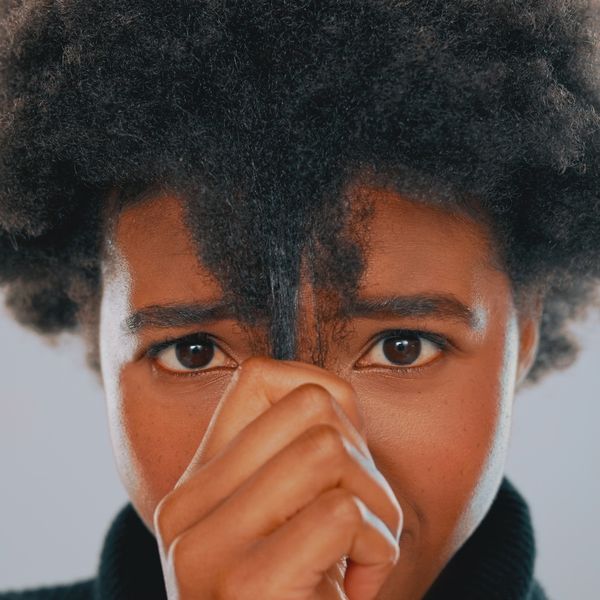
If there’s one thing that I’ve pretty much become an expert in without really wanting to be, it’s how to get through certain things when it comes to learning more about natural hair. Take that wretched growing-out phase, for instance. When you’re ready to go from uber short to something that’s, say, past your chin, getting from Point A to Point B can feel like your own personal hell — if you don’t know what you’re doing.
If you’re looking at the monitor (or phone screen) and are aggressively nodding your head up and down because that is exactly where you find yourself these days, help is on the way. I’ve got 12 things that you can do to make growing out your hair not feel like pure torture; things that I can personally vouch for because I’ve tried it and succeeded with each and every one of ‘em.
1. Stop Watching the “Stove”
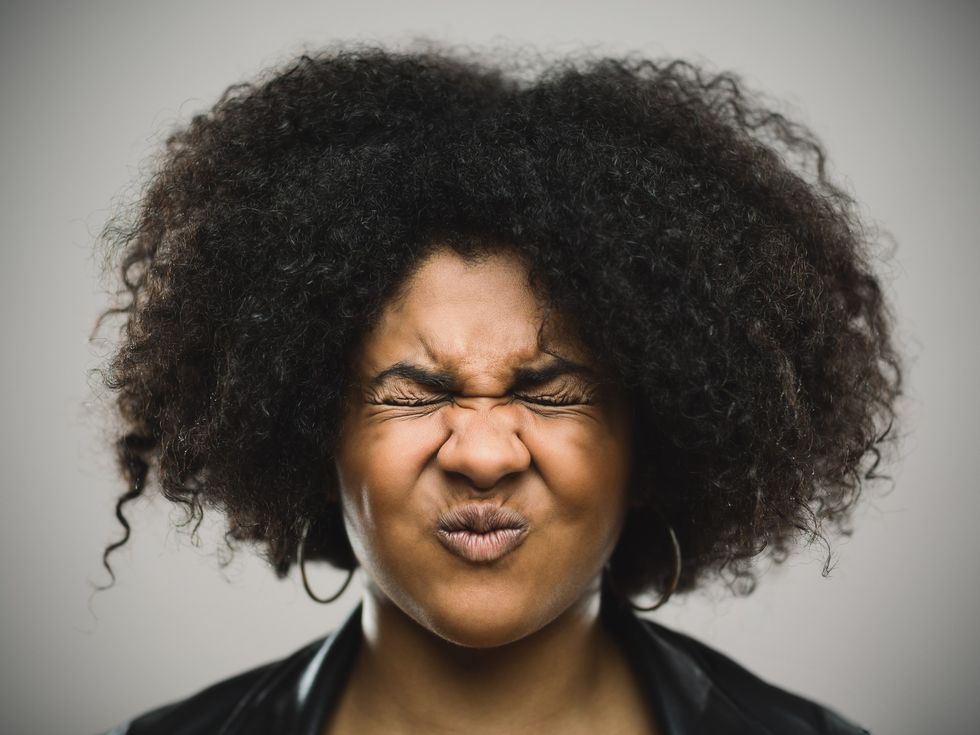
Getty Images
Pretty much all of us have heard some elder in our family say that a watched pot never boils water. With the kind of personality I have, I’ve tested that theory (LOL). For me, it’s not watching water heat up that drives me up the wall, it’s opening the oven over and over again while baking something that drives me batty. And here’s the thing — how counterproductive is it to do that anyway, since opening the oven lets heat out, making it even more challenging for whatever is trying to bake…finish?
I’m pretty sure you can see where I am going with this, right? Listen, the reality is that your hair is pretty much only going to grow between ¼” – ½” a month. That’s it. The goal is to do all that you can to retain the length as it comes in. So, if you’re about to embark on growing your hair out and you think that playing a game of stare-down with it is going to accomplish something — all that’s gonna do is piss you off, and stress does nothing helpful when you’re trying to have healthy hair. Stop watching the stove, sis. Stop watching the freakin’ stove.
2. Do Consistent Scalp Massages
The reason why I’ve pitched and written articles about scalp care (check out “10 Things Your Scalp Has BEEN Waiting For You To Do” and “Treat Your Scalp To A Little Bit Of Detoxing This Weekend”) is because, I basically had to learn the hard way that, since my scalp is my hair’s foundation, I need to be uber proactive about taking good care of it. One way to do that is by giving it weekly massages.
Scalp massages increase blood flow to your hair follicles, help to strengthen and even thicken your hair strands, and lower stress and anxiety levels (including stressing over growing out your hair). And since stress is directly linked to hair loss and gray hair, the more scalp massages, the better, chile.
Some quick tips on how to massage your scalp properly and effectively here.
3. Enjoy Protective Styles. Don’t (Solely) Rely on Them, Tho.
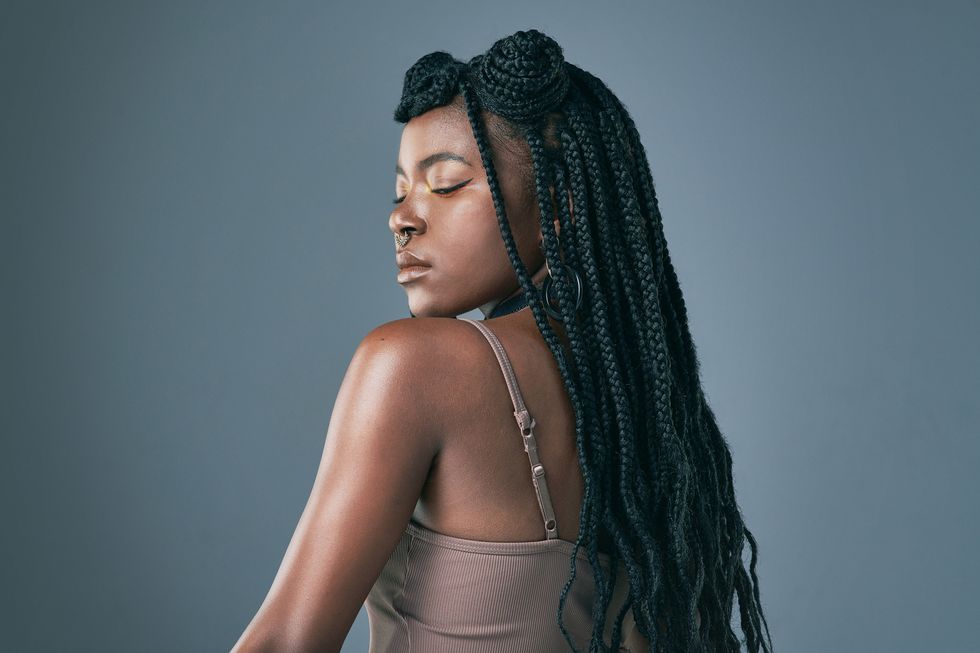
Getty Images
One of my favorite quotes is, “The excess of a virtue is a vice;” I believe that Aristotle originated it. That said, you’ve already peeped the header for this tip, so you already know where I’m going with it, right? As much as I’m a fan of protective hairstyles (check out “This Is Your Summertime Protective Style Cheat Sheet,” “This Is How To Know Your Protective Style Ain't Workin'”) — and wigs qualify, by the way (check out “This Is The Way To Properly Care For Your Hair While Rockin' A Wig”) — I also know that they weren’t supposed to be in our hair for more than 6-8 weeks at a time (tops).
Between the tension of tight braids and twists, our scalp needing some TLC, ends needing to be trimmed, and hair simply needing to REST — whether it’s box braids, crown braids, lace fronts, sew-ins, passion twists, faux locs…whatever you’ve got goin’ on, chile, if your ultimate goal is growth, you can’t be living in a protective style 365 days out of the year. It’s counterproductive at best and damaging at worst. So yeah, find ways to enjoy your hair without constantly relying on protective styling. Sometimes wearing them? Cool. All the time? Not cool.
4. Master How to Naturally Stretch Your Tresses
If your hair is 4-type, congrats! The reason why I say that is because, although you have the tightest curls (which can make it feel like your hair is never growing), you also have the most versatility; especially when it comes to getting through the growing-out phases. Don’t believe me? When you get a chance, go to YouTube and put “stretch 4-type hair” in the search field to have your mind blown (some examples are here, here, and here)!
It really is amazing how many of us can think that, just because our curls aren’t loose, we’re not gaining inches when that typically couldn’t be further from the truth. So, while it really is a good idea to keep hair manipulation down to a minimum, if you want to stretch out your tresses in order to stay motivated, get into braiding, banding, or stretching out your wash ‘n gos AFTER they are dry.
Knowing that there are heatless (meaning less damaging) ways to have longer hair? How liberating is that?
5. Take Wash ‘n Gos Up a Notch
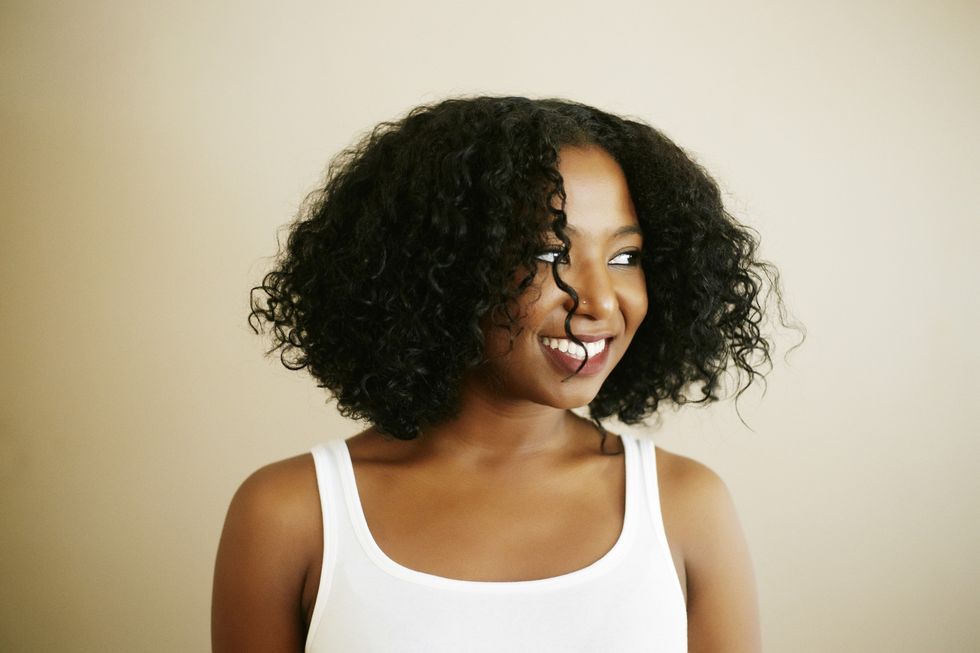
While I was watching a video by a YouTuber by the name of Tiana Michelle talk about how she does her own wash ‘n gos, it reminded me that I need to get more into that (once the weather warms up a bit). If you happen to be on a natural hair journey, wash ‘n goes are great because, not only do they not require a ton of work or upkeep, but they can also teach you how to embrace your hair’s natural curl pattern.
The key is to use the best products — ones that complement your own hair texture. And yes, that can take a bit of trial and error, but it’s ultimately worth it to discover what they are. Some that I know naturalistas are fond of include Camille Rose Naturals Curl Maker, Mielle Organics Pomegranate & Honey Coil Sculpting Custard, tgin Honey Whip Hydrating Mousse, Uncle Funky's Daughter Curly Magic Curl Stimulator, and The Doux Bee Girl Honey Curl Custard.
6. Don’t Let Up on Leave-In Conditioning
You’ve probably heard that one of the reasons why it’s easier for other ethnicities to retain length is because it’s easier for their hair to keep moisture in it. Why? Because when strands are straighter, the natural sebum that flows from our scalp is better able to coat our strands from root to tip.
This means that since our hair has a curlier texture, we have to put a bit more effort into keeping it hydrated; one way to do that is by applying a leave-in conditioner.
What I tend to do is apply one as the final move on wash day and then apply more on the ends of my hair before braiding it up; I will also put some on the tips when I’m wearing my hair out. I’ll admit that it’s also a bit of trial and error to figure out which leave-in works best for you. Two that I like a lot are Mielle’s Pomegranate & Honey Leave-In Conditioner (it’s super light and deeply penetrating at the same time) and a chebe powder butter that I found on Etsy (you can cop it here).
Chebe is an article all on its own. What I’ll say for now is, that if you’re looking for something that will strengthen your hair and help to reduce split ends, it totally has you covered.
7. Use Gentle Color Options ONLY
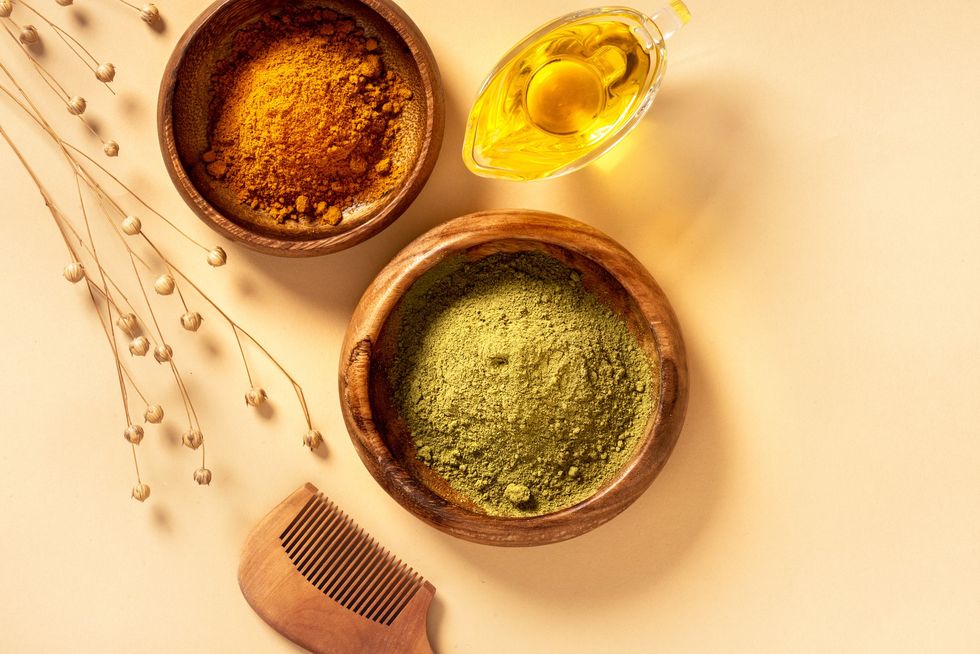
Getty Images
Listen, I know from personal experience that while you’re waiting for your hair to reach ear, chin, or shoulder length, it can be super tempting to switch up the color often in order to keep you patient and distracted. While, in theory, that strategy makes a ton of sense, the challenge is that you can end up drying out your hair, which leads to damage that results in breakage or having to cut it — and since your goal right now is to grow your hair out…how counterproductive would that be?
Honestly, the less color that’s in your hair, the better. However, if you must, go with gentle color options ONLY, like henna, hair color wax, or semi or demi-permanent brands. Bottom line, ammonia is never your hair’s friend yet it’s definitely not when you find yourself smack dab and in the middle of the growing out phase.
8. Be Consistent with Bond Building and Thermal Heat Protectant
I’m someone who doesn’t have any chemicals in my hair; however, I do like to wear my tresses stretched out, and so, on wash days, I will blow my hair out and then keep it stretched by braiding it until the next wash day rolls around (which is every 2-3 weeks for me personally). When I’m sure to apply a protein treatment, deep condition, add a bond builder, and a cream-based thermal heat protectant before applying any heat, it’s all good in the hood. When I skip any of this (well, protein treatments get rotated about every 2-3 wash days), all hell breaks loose — quite literally, too. SMDH.
Protein keeps hair stronger. Deep conditioning adds moisture. Okay, but what gets overlooked a lot is the fact that bond building products are great at “filling in the holes” when it comes to the cuticles of your hair. I’ve been using Marc Anthony’s Repairing Leave In Conditioner Treatment, Repair Bond +Rescuplex, for a little over a year now, and it’s one of the best investments that I’ve made for my hair to date.
9. Stay Up on Hair Accessory Trends
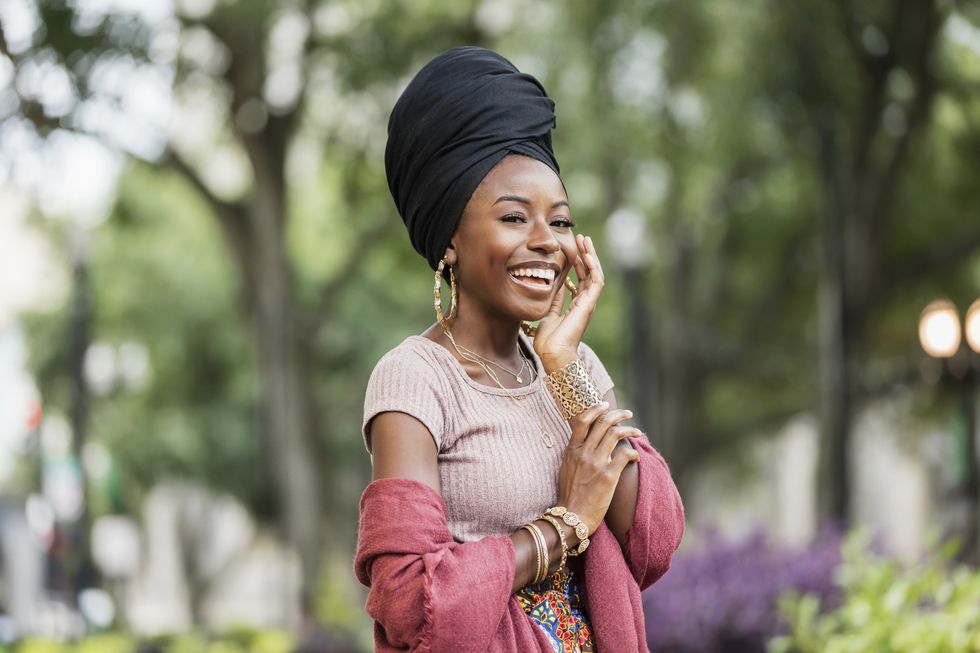
Getty Images
Camouflage. If there’s one thing that has gotten me through my own growing-out phase journey, it’s literal hair camouflage that is otherwise known as hair accessories. That’s actually why hair bonnets in public (yep, I’m THAT girl) irk the mess outta me because there are way too many options out here that look less like “I just rolled outta bed” than that. Turbans, hair wraps, hats, skull caps — the list goes on and on. All of ‘em are super cute and a great way to get through a bad hair day or a day when you’re so sick of waiting on some extra inches that you’re tempted to cut it all off (or all off AGAIN) and start over.
So yeah, definitely see stacking up on some hair accessories as an investment into your long(er) hair goals. Some that will be in style over the next several months include hair ribbons, comb headbands, rhinestone-embellished items, 90s-style hair clips and hair pins, and beanies.
10. Handle Your Hair Like Silk
Silk is both strong and uber fragile at the same time — and that’s basically our hair in a nutshell. That’s why it’s so important to handle your tresses with extreme care, especially when it comes to the oldest parts of your hair, which are your ends. One way to do this is to make sure that you either use your fingers or a detangler brush to style it. Now, I have tried the UNbrush that TikTok was losing their minds about. It’s not half bad. Whatever you do, just don’t be out here ripping through your hair and then wondering why your ends are raggedy. Your hair is silk. Your hair is silk. Your hair, sis…is like fine silk.
11. Expand Your (Big) Earring Collection
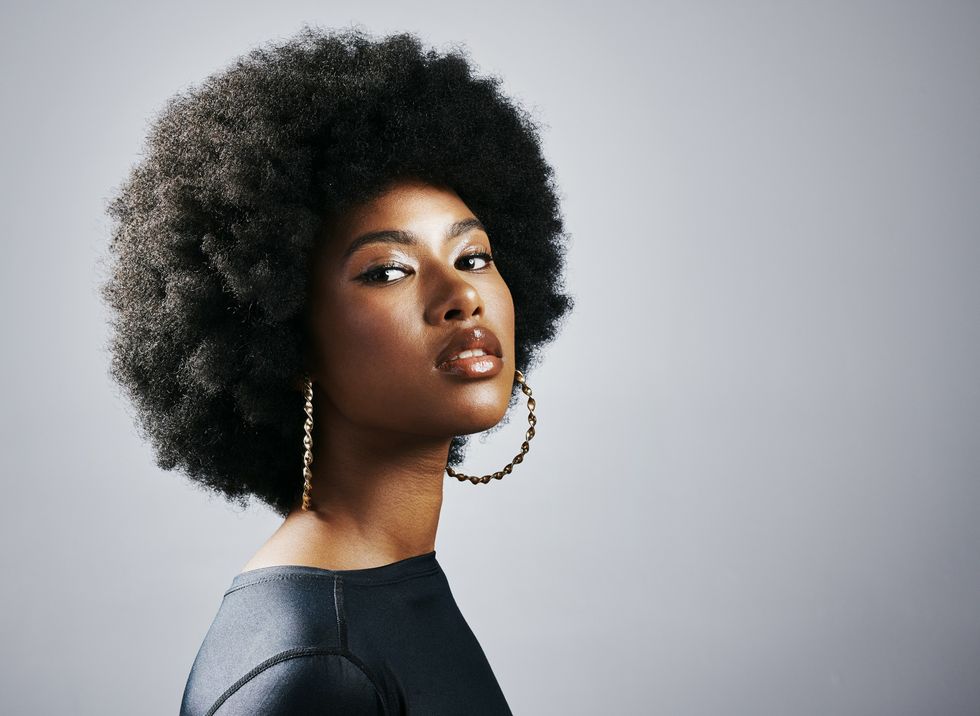
Getty Images
Hey, you think I’m playing, but I’m absolutely serious. Although I am totally Team Style-Your-Hair, I know from my own personal experience and looking at other women, both online and off, that when your earring game is on-point, and you’ve got a colorful lip happening, your hair is probably like the fifth thing (after your eyes, your smile and probably your outfit) that folks are gonna notice. So, if you’re a bit paranoid about how awkward the growing out phase may appear, ramp up your earring collection — the bigger, the better!
By the way, if you consider yourself to be a trendsetter, some popular earring looks for 2024 include chandelier styles, big-ass sparkle hoops, and mismatched earrings (they’re always a lot of fun!). Oh, and statement earrings that are only in one ear (think Janet Jackson when she used to wear one key in one earlobe).
12. LEAVE. THE. SHEARS. ALONE.
I’m pretty sure that a lot of y’all have heard that you should trim your hair every 6-8 weeks. Eh. I think the actual “rule” should be that you trim your ends whenever you need to — and you need to if you notice split ends, fairy knots, your hair tangles easily, you notice that your hair isn’t holding or keeping a style or your ends feel rougher than the rest of your locks do. Other than that, keep the shears out of your hair because if you spend a lot of time trying to make sure that your sides are perfectly even or that no strand is “unruly,” — I can tell you again from very up close and personal experience that you’re not going to see any real progress any time soon.
_____
Is the growing out phase easy? C’mon, you know better than that. Yet, can you get through it? If you apply these tips, keep your eyes on the prize, and RELAX…you most certainly can. Hit us back with some pics in the comments in six months to prove it, aight? Awesome.
Let’s make things inbox official! Sign up for the xoNecole newsletter for daily love, wellness, career, and exclusive content delivered straight to your inbox.
Featured image by katieho Seisa/Getty Images
This Is How To Keep 'Holiday Season Stress' From Infecting Your Relationship
Hmph. Maybe it’s just me, but it seems like there is something really weird happening in the fall season air (because winter doesn’t officially begin until December 21) that cuddle season is in full swing while break-up season is as well. In fact, did you know that break-ups are so popular during the holiday season that December 11 is deemed Break-Up Day?
The reasons why relationships shift around this time vary; however, I did both roll my eyes and chuckle when I read that a very popular one is because it’s an easy way to get out of getting one’s significant other a Christmas present. SMDH.
Anyway, I personally think that the less shallow folks out here may contemplate calling things “quits” or they at least distance themselves a bit from their partner (and what I’m referring to is serious relationships) due to all of the stress and strain that oftentimes comes with the holidays whether it be financial, familial, due to their tight schedules or something else.
Listen, I would hate for you and your man to miss the fun and happiness of experiencing this time of year, all because you are so overwhelmed or irritated that you can’t really enjoy it. That’s why I have a few practical tips for how to avoid allowing the typical holiday season stress from INFECTING your relationship.
Manage Your Expectations
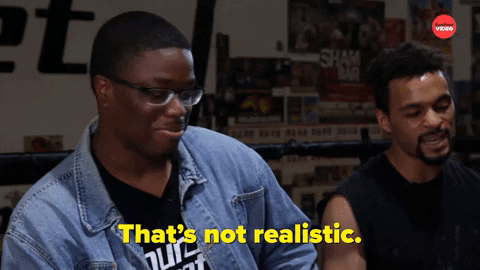 Giphy
GiphyUnmanaged expectations. If there is a main reason why the holiday season tends to be so stress-filled for so many people, I’d bet good money that this is the cause. And when you’re in a long-term relationship, expectations can manifest themselves in all sorts of cryptic and/or unexpected ways. You might have relatives who assume that you are going to be with them for Thanksgiving or Christmas when you have other plans in mind. You might be thinking that you are going to spend one amount for presents while your man is thinking something totally different. When it comes to scheduling, your signals may be crossed.
And you know what? To all of these scenarios, this is where clear and consistent communication come in. Don’t assume anything. Don’t dictate anything either. From now until New Year’s, mutually decide to check in once a week, just to make sure that you are both on the same page as it relates to the holidays and what you both are thinking will come along with it. The less blindsided you both feel, the less stressed out you will be. Trust me on this.
Set (and Keep) a Budget
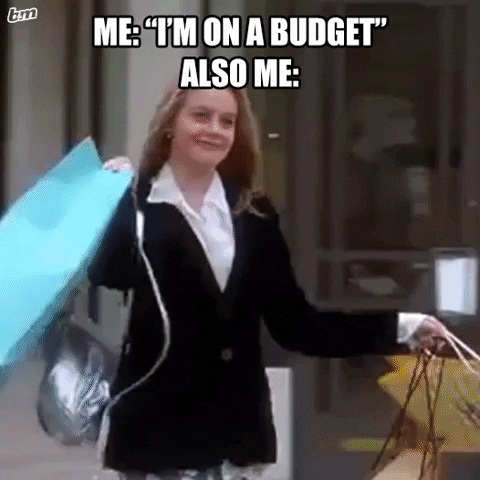 Giphy
GiphyOkay, so I read that last year, 36 percent of Americans incurred some type of holiday-related debt. Hmph. Last year, there was still some sense of normalcy in this country, chile, so I can only imagine what finances are gonna look like over the next several weeks. That said, since I don’t know a lot of people who don’t find being broke stressful, make sure that you and your bae set a budget and then stick to it this year — no ifs, ands or buts.
Because really, y’all — it doesn’t make sense to deplete savings and/or max out credit cards for a few days of giggles only to be damn near losing your mind because you don’t know how to make ends meet come Dr. Martin Luther King, Jr. Day.
And by the way, this tip doesn’t just speak to things like food and gifts; I also mean travel. If it doesn’t make a ton of sense (or cents) to be all over the place this year — DON’T BE.
Keep Matthew 5:37 at the Forefront
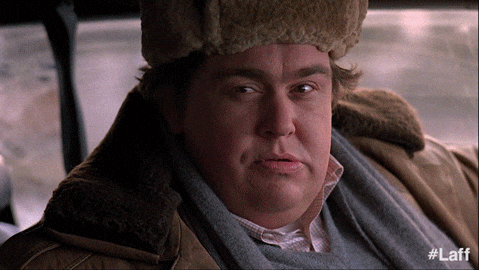 Giphy
GiphyIf off the top of your head, you don’t know what Matthew 5:37 says, no worries, here ya go: “But let your ‘Yes’ be ‘Yes,’ and your ‘No,’ ‘No.’ For whatever is more than these is from the evil one.” That verse right there? Oh, it’s a boundaries lifesaver! I say that because do you see “maybe” or “I’ll think about it” in there? Nope. LOL. It says that you should tell people “yes” or “no” and leave it at that — and that complements Anne Lamott’s quote, “’No’ is a complete sentence” impeccably well. Yeah, you’ve got to remember that anything beyond a yes or no to a request is privileged information; you don’t owe anyone details or an explanation.
Besides, if you are really honest with yourself, when someone asks you something and you give a “Umm, let me think about it” kind of reply, more times than not, you already know what your answer is going to be — so why not let you both off of the hook? Give your response. Commit to that. And let everyone (including yourself) get on with their lives and schedules.
I promise you that when it comes to those holiday parties, you are pissing more folks off by not RSVP’ing or doing so and not showing up than just saying, “Thank you but not this year” off the rip.
Remember That Your Personal Space Is Privilege Not a Right
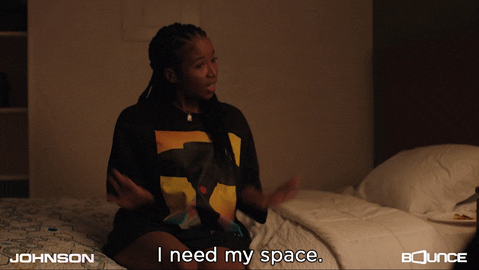 Giphy
GiphyA friend of mine recently bought a new house and invited me over to come see it. He’s a single man with no children, so as I was taking in all of the space that he had, especially as I walked through his finished basement, I joked about relatives coming to live with him. “Hell no” and “absolutely not” were pretty much his immediate responses as he went on to say that some folks even had the nerve to be offended when he told them that he had no intentions on taking DNA in.
Ain’t it wild how people think that your stuff is their right? And yes, that brings me to my next point. Your home is your sanctuary space. If you want to host folks this year — cool. If not, ALSO COOL. Please don’t let folks (family included) guilt you into how they want you to act or even into what they would do if the shoe was on the other foot. You are not them — and as one of my favorite quotes states, “If two people were exactly alike, one of them would be unnecessary.” (A man by the name Larry Dixon said that.)
Hell, my friends? They know that I am good for sending them random things that they need or even want all throughout the year. Coming over to hang out at my pace, though. Uh-uh. Chalk it up to being a card-carrying member of the ambivert club yet I like keeping my living space personal — and I sleep like a baby, each and every night, for feeling that way.
Always remember that your space, your time, your resources, your energy and shoot, yourself period (including your relationship), are all things that are your own. You get to choose how, when and why you want to share them. The holiday season is certainly no exception.
Cultivate Some “You Two Only” Traditions
 Giphy
GiphyIt’s not uncommon for some couples to hit me up after the holiday season to “detox.” Sometimes it’s due to the financial drama (and sometimes trauma) that they experienced. Sometimes it’s because they allowed their relatives (especially in-laws) to get more into their personal business than they should’ve. More than anything, though, it tends to be because they didn’t get enough quality time together and so ended up feeling “disconnected.”
Please don’t let that happen. Listen, I’m not even a holidays kind of woman and yet, I will absolutely sit myself down with some hot chocolate and chocolate chip cookies to enjoy a Hallmark holiday film or two. Aside from the fact that most of them are lighthearted and sweet, I also like that they usually focus on couples loving on each other amidst all of the holiday beauty and ambiance — which is something that all couples should set aside some time to do.
Maybe it’s a vacation. Maybe it’s a staycation. Or maybe it’s my personal favorite, A SEXCATION. Whether it’s for a few days, the weekend or even overnight — don’t you let the holidays go by without setting aside time for you and your man to celebrate one another. Don’t you dare (check out “Are You Ready To Have Some Very Merry 'Christmas Sex'?”).
GET. SOME. REST.
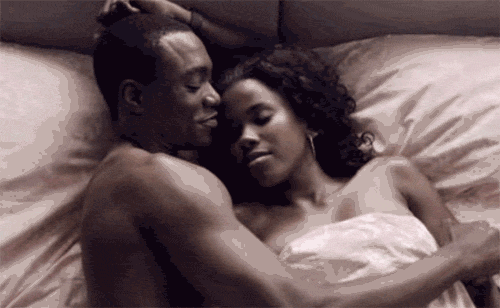 Giphy
GiphyI once read that 8 out of 10 people get stressed out over the holidays and 3 out of 10 lose sleep during to it — and when you’re stress-filled and sleep-deprived, that can absolutely lead to hypersensitivity, making mountains out of molehills and even not being in the mood for sex.
Your relationship can’t afford to go through any of this, so definitely make sure to prioritize rest. I don’t care how unrealistic it might seem during this time, sleep should never be seen as a luxury; it will always and forever be a great necessity.
That said, try to get no less than six hours of shut-eye in (check out “6 Fascinating Ways Sex And Sleep Definitely Go Hand In Hand”) and even ask your bae to take a nap with you sometimes (check out “Wanna Have Some Next-Level Sex? Take A Nap, Sis.”). Not only will sleep help to restore your mind, body and spirit but, when it’s with your partner, it’s an act of intimacy that can make you both feel super connected, even in the midst of what might feel like chaos.
___
Holiday season stress is real. Still, never give it the permission or power to throw your relationship off. Put you and your man first and let the holidays be what they are gonna be, chile.
Let’s make things inbox official! Sign up for the xoNecole newsletter for love, wellness, career, and exclusive content delivered straight to your inbox.
Featured image by Shutterstock
Whew. Did you know that somewhere around 122 million Americans travel during the holiday season? Listen, I went to see my godbabies this past September and got caught up in a crazy ass traffic jam at BNA (the Nashville airport) that damn near has me considering air travel ever again — especially during this time of the year.
Besides, it’s not like it’s a written rule that you have to travel over the holidays. In fact, if you want to play it chill this year, why not enjoy a staycation instead? Although it might seem like it’s a “poor man’s compromise,” as you’re about to see, it actually…isn’t.
1. Go All Out with the Christmas Décor
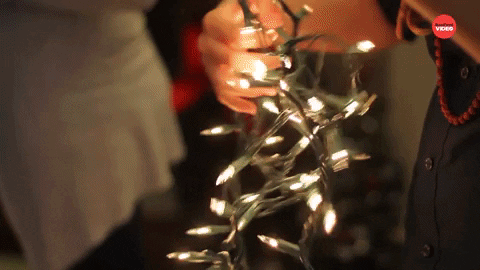 Giphy
GiphyThere is someone I know who is so obsessed with Christmas, she’s damn near annoying-borderline-terrifying. I’m. Not. Kidding. Yet hey, if you’re going to do a holiday-themed staycation (emphasis on “holiday-themed”), that’s kind of how you’ve got to be. Some décor ideas include:
- A fresh Christmas tree (is the most ideal) that is ultimately decorated
- Wreaths on outside and inside doors
- Garland (with twinkle lights) in predictable and unpredictable places
- Poinsettias
- Mistletoes
- Snow globes
- A stocking (with some of your favorite things in it)
- Fake snow
- Stars
- Angels
- Candy canes
- A BLACK Santa (LOL)
I mean, since you are going to be spending a lot of time at home, it can feel like a mini-winter wonderland if you are intentional about doing more decorating to your living space than you ever have before!
2. Buy a Couple of Christmas-Themed PJs
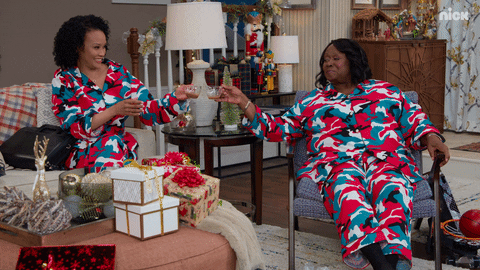 Giphy
GiphyWhile I was doing some research on a totally different topic, I happened upon an article that talked about the psychology behind why we should be intentional about what we wear to bed. When you stop to think about the fact that (hopefully) you are sleeping somewhere between 6-8 hours every night, it would make sense that things like the color and fabric of your sleepwear would have a real impact on you — even subconsciously.
Well, when it comes to Christmas décor, specifically, not only does it take you back to nostalgic memories, it can also boost your moods. So, aside from being on-10 with your Christmas décor, also invest in some Christmas-themed PJs. Since you’re going to be doing a lot of lounging around (RIGHT?), do it in something that makes you think about all of your favorite things about this time of year.
3. Cop Some Christmas-Scented Candles
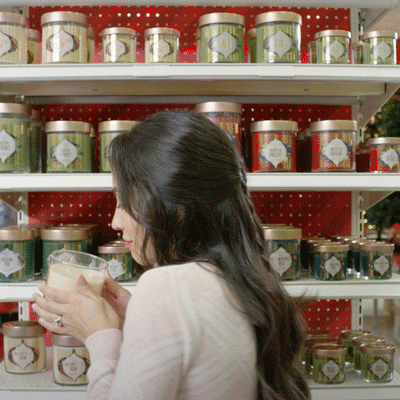 Giphy
GiphyThere really is no telling how many articles that I’ve written where I am singing the praises of scented soy candles. Candles are soothing, comforting and a very easy way to reduce stress. Also, since it gets darker quicker and for a longer period of time around this time of the year, candles provide a relaxing vibe to your home. Since it is Christmastime, go with scents that are reminiscent of the season:
- Cinnamon
- Vanilla
- Cranberry
- Apple
- Pine
- Frankincense and Myrrh
- Peppermint
- Cashmere
- Ginger(bread)
- Orange
- Sugar Cookies
- Sandalwood
- Cloves
- Cedarwood
- (Hot) Chocolate
Personally, one of my favorite candle companies is Goose Creek. Their signature collections will have your entire house smelling like a high-end bakery. No exaggeration.
4. Play Some Winter-Themed ASMR Sounds
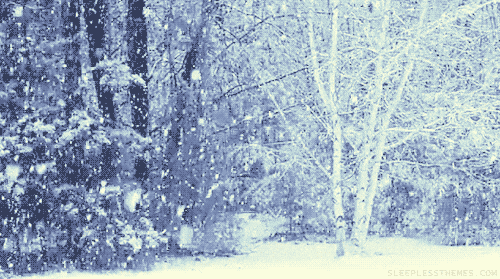 Giphy
GiphyI’m from Nebraska and my mother was a New Yorker. So, if there is one thing that I like, it’s seasons and that includes snow during wintertime. Unfortunately, Nashville is cray-cray when it comes to that. If, where you live, the weather is all over the place too (which is why I think it’s insane that some people still give pushback to global warming) and you would like for it to at least seem like you are in your own winter wonderland — invest in some fake snow to strategically place around your home.
Oh, and don’t forget to turn on some winter-themed ASMR sounds too. YouTube has videos that run for hours on end that feature blizzards and howling winds that really can make you feel like you are in the midst of an ice storm.
5. Host a Holiday Movie Marathon
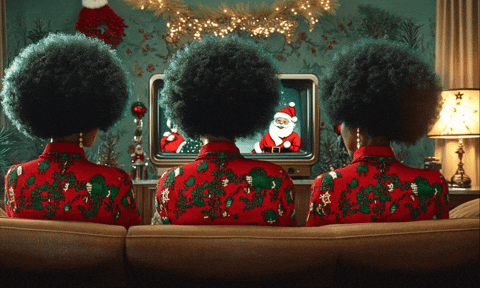 Giphy
GiphyOne thing to remember about a staycation is it doesn’t mean that you have to be alone or that the only people who can participate are the ones who live with you. Since a staycation is simply about staying close to home instead of traveling afar — absolutely consider having some of your favorite people over for a holiday-themed movie marathon. Shoot, Black America Web even did you a solid by publishing “25 Best Black Christmas Movies Of All Time;” plus, Tubi has a Black holiday hits section of indie films too.
Oh, and make sure to get creative with the Christmas-themed snacks. Some ideas? Some Kentucky-fried turkey tenders with cranberry hot sauce (recipe here), some Holiday Hot Spinach Dip (recipe here), some Grinch Kabobs (recipe here), some roasted pecans (recipe here) and some Pomegranate Guacamole (recipe here).
6. Spend a Night (or Two) at a Hotel or Vacation House
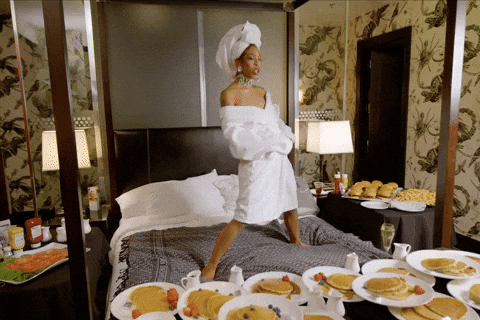 Giphy
GiphyJust like you don’t have to be alone during a staycation, you also don’t have to be cooped up in your house the entire time. Get a change of scenery in your own city by spending the night in a hotel that you’ve always wanted to try out or renting a vacation house for you and some of your folks to hang out in during the time between Christmas and New Year’s Day. I have a “love little sister” who does this randomly when she needs a break from her work as a therapist. She says that it’s damn near like taking a trip (and she has PLENTY of passport stamps; trust me).
7. Have Brunch or Dinner at a Christmas-Themed Restaurant
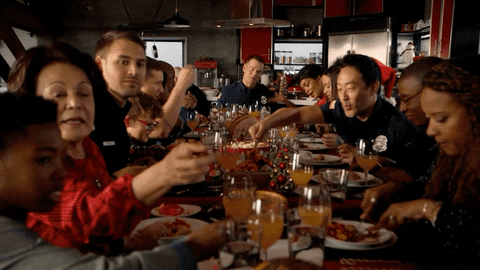 Giphy
GiphyIf nothing puts a bigger smile on your face than the thought of DoorDashing meals and barely even touching your stove during your staycation — hey, I am right there with you. Do consider going out to brunch or dinner during your chill time, though. It’s another way to bond with people and create some current holiday memories. And if you’ve got a bae and you opt for dinner, it can be a wonderful type of Christmas-themed date.
8. Go to a Holiday-Themed Concert
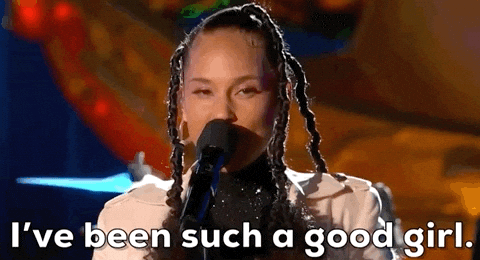 Giphy
GiphyBeing that I got my start as an entertainment writer, hear me when I say that I’m not someone who just has to go to a live concert every chance that I get. Oh, but baby, when I saw that El DeBarge was doing a City Winery tour and he was going to be here right before Christmas — I booked myself a ticket quick, fast and in a super-duper hurry! Shoot, I didn’t even want to go with someone because I plan to give him and that falsetto voice of his my complete and undivided attention. LOL.
I don’t know what it is about the holiday season that makes live music that much more enjoyable — but if there is a concert that features one of your favorite artists happening right through here, consider that to be a cool way to “tour your city” while cultivating a really awesome memory at the same time.
9. Also, Go Ice Skating
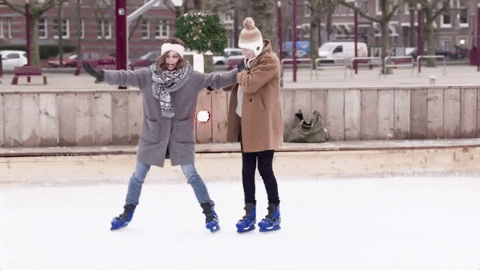 Giphy
GiphyOne of my fondest memories of time with my father is going ice skating. We actually would do it in the summer (because that is when I would visit him) and, every year, he would get me a new ice skating outfit. Even now, when I watch someone ice skate (even in movies; like in the classic movie Garden State), I will have warm fuzzies.
Anyway, if you’ve never been before, go. If it’s been forever since you have, also go. There is something that is very sweet and so signature Christmas about it. Plus, it’s a top-tier form of exercise.
10. Take a Christmas Lights Tour
 Giphy
GiphyAnother one of my favorite Christmas memories is driving through neighborhoods and looking at the Christmas lights. And just like a Christmas concert can be a form of hometown touring, so can doing this if you decide to choose a couple of areas where you’ve never really been or rarely frequent.
Now are you excited about the thought of experiencing a holiday-themed staycation?
I thought you would be. ENJOY!
Featured image by Shutterstock


